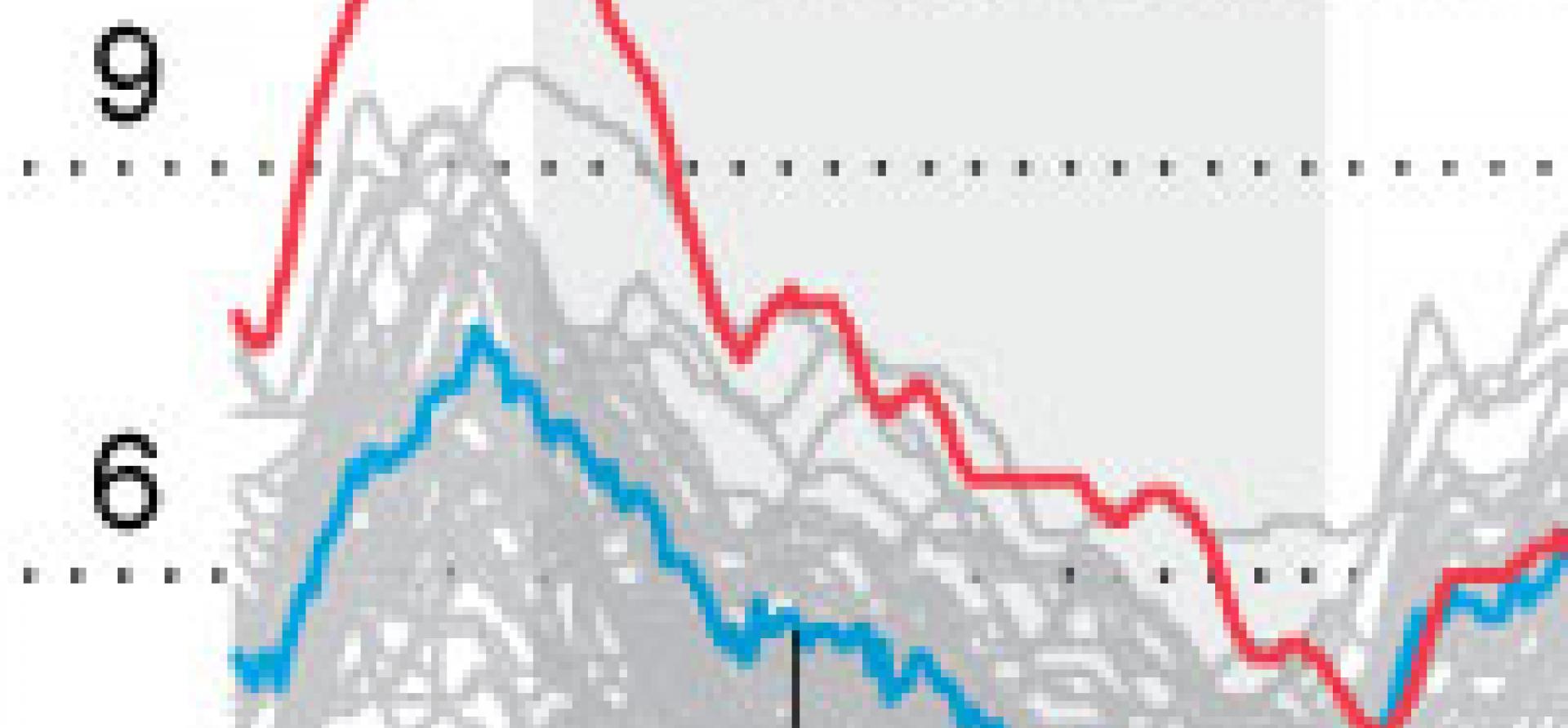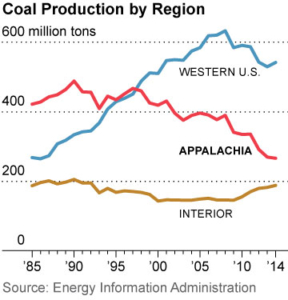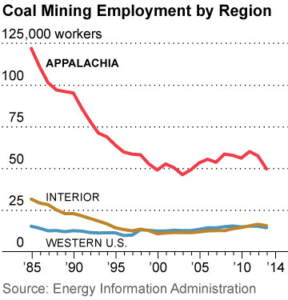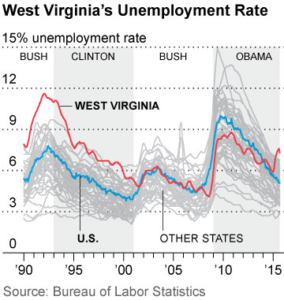Appalachia’s Coal-Industry Troubles Started a Long Time Ago

One of the ugly myths promoted by the coal industry is that President Obama is to blame for its decline.
It’s a narrative that’s of a piece with Obama Is a Muslim and Obama Is a Kenyan, canards that have an unspeakably hateful subtext at their heart. The “war-on-coal” chapter of these fictions took an especially nasty turn last week in West Virginia when the president came to town to promote a federal program to help heroin addicts. The tone was caustic and the scapegoating overt.
A red-meat excerpt from Bill Cole, president of the state senate:
“President Obama now comes to West Virginia not to meet with the displaced coal miners or small businesses shut down as a result of his war on coal, but to offer the federal government’s help in fighting a drug epidemic that he helped to accelerate.”
Another one, from Bill Raney, president of the West Virginia Coal Association:
“Part of the problem is the rampant unemployment that your anti-coal policies are creating. These policies are creating misery on a scale unimaginable even a few years ago. When you were elected, the unemployment rate in West Virginia was around 4.5 percent. The coal industry was thriving even during one of the worst recessions this country has faced.”
And in a sad interview published today by SNL, the energy-industry trade publication, state Rep. Del. Rupie Phillips:
“Yes, I called Obama a terrorist. He’s the one who has played havoc on our coal industry. He is a terrorist.”
Easy lies to tell—maybe easy lies to believe—but the data, that’s a different story.
Appalachia’s coal-mining industry has been in deep decline for many years because of market forces that people like Bill Cole, Bill Raney and Rupie Phillips are unwilling or unable to concede. And the momentum is growing. Coal isn’t generating as big a proportion of U.S. electricity production as it used to, thanks to the rise of natural gas and the expansion of renewable energy, and export markets are dying. Add to these recent trends the fact that the easiest pickings are over in Appalachia, where coal is not as cost-efficient to mine as it is in, say, the Powder River Basin of Montana and Wyoming.
Here are the facts:
- Coal production in what the U.S. Energy Information Administration categorizes as central Appalachia—Eastern Kentucky, Tennessee, Virginia, and Southern West Virginia—has been on the wane since the late 1980s.
- Coal-industry jobs in the region have declined from almost 125,000 since the mid-1980s to less than half that number today, and that biggest chunk of that drop came before Obama rose to power.
- Unemployment in West Virginia has dropped under Obama, from over 9 percent in the wake of the financial crisis of 2008-2009 to less than 6 percent as recently as December.
And while it’s true that the jobless rate in central Appalachia has increased in recent months (to 7.3 percent in September) it is nowhere near as bad as it has been in years past (almost 9 percent in 2011 and over 11 percent in the early 1990s).
One additional data point: The price of central Appalachian thermal coal—a reflection of its demand—is less than $40 per ton today, down more than 70 percent from its peak eight years ago.
Coal will not save the region, and Appalachia’s leaders would better serve their public by telling the truth rather than spinning malicious yarns and by finding a way forward that is not stuck in the past.
Karl Cates is IEEFA’s director of media relations.

















